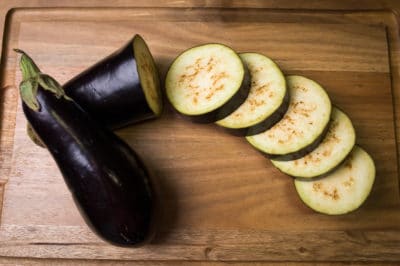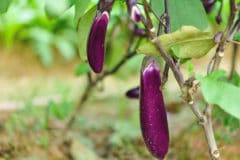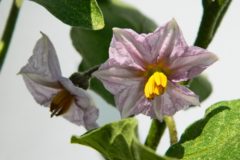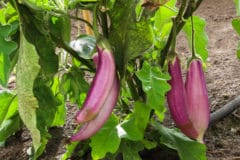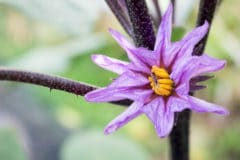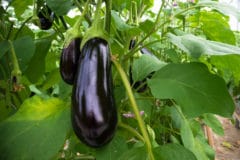Why Are There Brown Spots in Eggplants?
These are the most common reasons why you might see brown spots in your eggplants:
- Natural discoloration
- Oxidation
- Bruises
- Overripe
- Internal Rot
Safe to Eat
If the brown spots in eggplants happen for the following reasons, they’re safe to eat:
Natural Discoloration
Some brown spots in eggplants are natural. This occurs around the eggplant seeds , where the flesh will be tan or brown. If this is the case, you can safely eat the eggplant.
Oxidation
Oxidation is another cause of brown spots. This happens when air gets in the eggplant causing the flesh to turn brown, similar to what happens to an apple after you cut it. Air can reach the eggplant flesh from a puncture or soft spot on the skin. It’s fine to eat the eggplant, if this is the case.
Bruising
It’s also safe to eat an eggplant with bruises, even though the brown spots don’t look very appealing.
Overripe
Eating overripe eggplants is safe, but they usually have a bitter flavor. The bitterness is not as noticeable if you use overripe eggplants for sauces.
Unsafe to Eat
These two reasons for brown spots in eggplants make them unsafe to eat:
Internal Rot
When the internal flesh of your eggplants rots, it’s toxic to eat. Rot occurs from damaged skin that allows bacteria, mold, fungus and air to reach the inside of the eggplants. Even if you only see a few brown spots, along with mold or fungus, discard the whole eggplant.
Eggplants don’t stay fresh very long after picking, so you should use them as soon as possible. They also don’t freeze or can well, so you can’t preserve them . It’s important to determine whether the brown spots are natural, or if rot or mold are the causes before you use eggplant in your favorite recipe.
